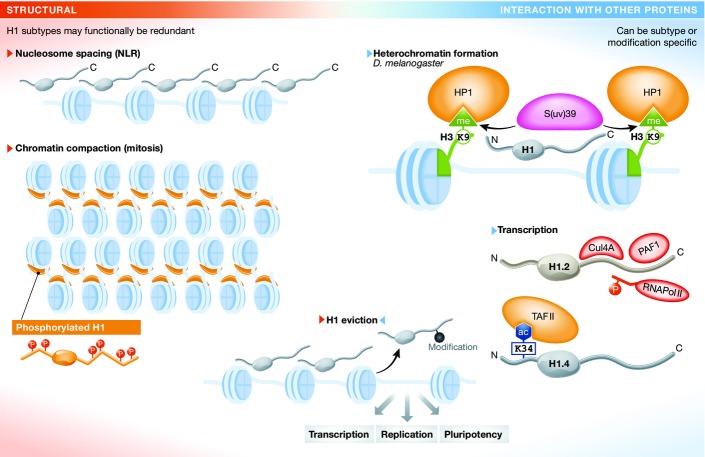Figure 4. Model of H1 modes of action.
Based on current knowledge, we propose a dual model of H1 function: (i) H1 is a key structural component of chromatin. It can stabilize nucleosome structure and influence nucleosome spacing, and it is required for chromatin compaction (left panel). These functions often seem to be redundant between different subtypes. (ii) H1 also functions through interaction with other proteins that will in turn modify chromatin or take part in DNA-based processes (right panel). In Drosophila melanogaster, H1 recruits S(uv)39 to chromatin, which is required for heterochromatin formation 69. These functions are often subtype specific, as, for example, the recruitment of Cul4A and PAF1 by H1.2 to support target gene transcription 83. Often, H1 modifications come into play, as was demonstrated for HP1 binding to H1.4K26me or TAFII binding to H1.4K34ac 72,122. Of course, these two modes of action are not always separable. For example, interaction with other proteins or H1 modifications can be required for H1 eviction from chromatin (f), so that it will no longer exert its stabilizing function, resulting in chromatin opening for DNA-based processes like transcription, replication and repair.

